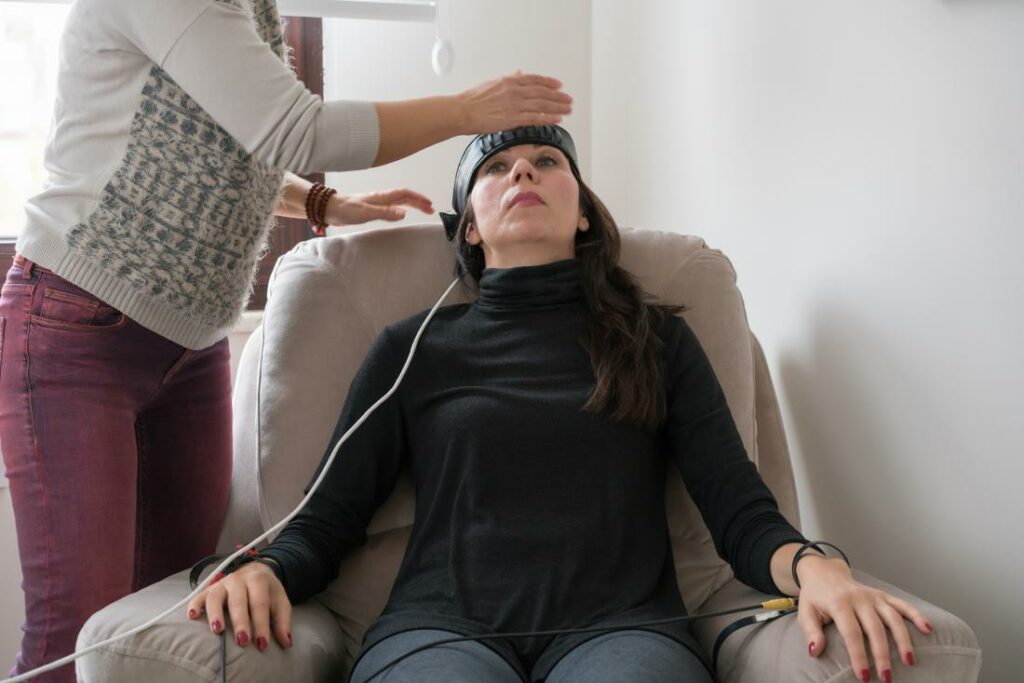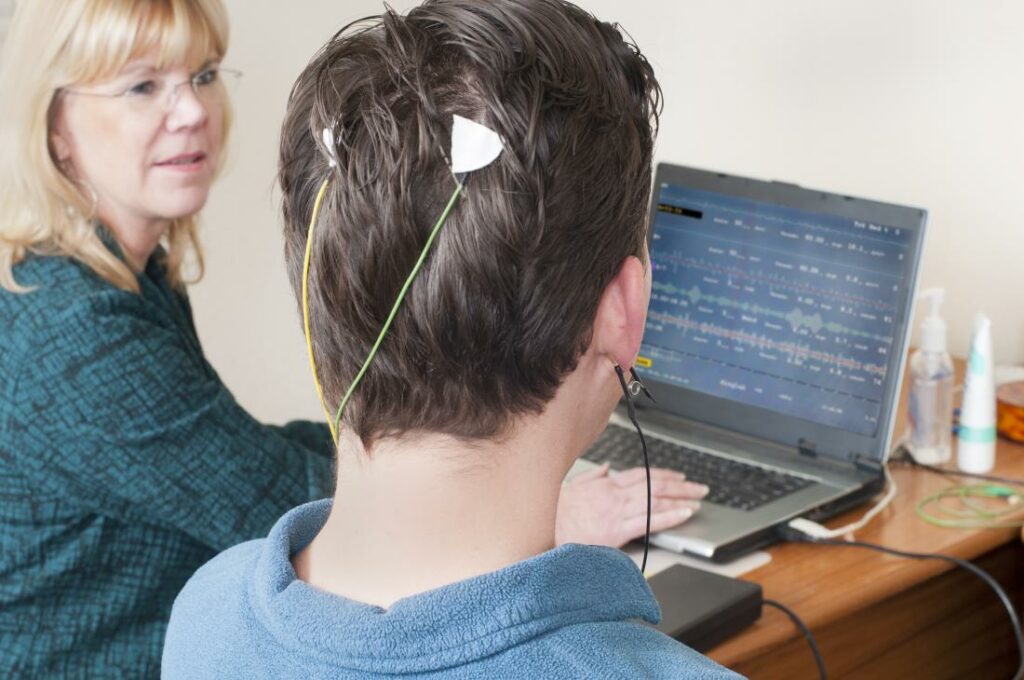For those with OCD, life can feel overwhelming and out of control. But with the right therapy and support, you can manage your symptoms and live a more balanced life. One such therapy is called biofeedback, which is an evidence-based method to help manage stress and anxiety. In this article, we’ll discuss what biofeedback for OCD is, how it works, its potential benefits, and how to find a therapist who specializes in this type of therapy. With the right treatment plan in place, you can take back control of your life and feel more calm and relaxed about your daily struggles with OCD.
Contents
What is Biofeedback?

If you have OCD, you may feel like you can’t control your thoughts or actions. You may be stuck in a cycle of repetitive behaviors that feels impossible to break. But there is hope. Biofeedback for OCD is a type of therapy that can help you manage your symptoms and regain control of your life.
Biofeedback is a treatment that uses sensors to measure your body’s response to stressors. The data from the sensors is then used to help you learn how to control your body’s response to stress. Biofeedback for OCD usually involves two types of therapy.
Biofeedback for OCD can be done with a therapist or at home with a biofeedback device. If you decide to try biofeedback at home, it’s important to choose a device that is FDA-cleared and has been proven effective in clinical studies. Therapists who are trained in biofeedback can help you find the right device for your needs.
Biofeedback for OCD is a safe, non-invasive treatment that is effective in reducing OCD symptoms. If you are struggling with OCD, talk to your doctor about whether biofeedback might be right for you.
How Does Biofeedback Work for OCD?
Biofeedback is a treatment option for OCD that can be used in conjunction with traditional therapy and medication. This type of therapy uses feedback from the body to help the person with OCD to control their anxiety and break the cycle of compulsions and obsessions.
There are different types of biofeedback, but all work by measuring something in the body that is related to stress or anxiety, such as heart rate, skin conductance, or muscle tension. The therapist then provides feedback to the patient about their levels of stress or anxiety, which can help them to learn how to control these symptoms.
The working of biofeedback typically involves two stages:
- Relaxation: During the first stage, the therapist will guide the patient through relaxation techniques such as deep breathing, progressive muscle relaxation, and guided imagery. This helps to reduce stress levels and makes it easier for them to focus on their body’s responses.
- Feedback: In this stage, the patient is connected to sensors that measure their physiological responses. The therapist then provides feedback about these responses to help the patient learn how to control them. For example, if the patient notices that their heart rate increases when they feel anxious, they can be taught how to use relaxation techniques to bring it back down.
By learning how to recognize and control their physical reactions to anxiety-inducing stimuli, patients can gain more control over their OCD symptoms and learn how to manage them healthily. The use of biofeedback to treat OCD can be especially helpful for those who have not responded well to traditional treatments.
Pros and Cons of Biofeedback Therapy

Biofeedback therapy is a form of treatment that uses technology to help people learn how to control their body’s response to stress. It is often used to treat conditions such as anxiety, chronic pain, and hypertension. While biofeedback therapy can be effective, there are also some potential drawbacks to consider.
Pros:
- Biofeedback therapy can be an effective treatment for conditions like anxiety and chronic pain.
- It can help people learn how to control their body’s response to stress.
- Biofeedback therapy is usually safe and has few side effects.
- It can be used in combination with other therapies or treatments for better results.
- Biofeedback therapy is relatively affordable compared to other treatments.
Cons:
- The effectiveness of biofeedback therapy depends on the individual and may not work for everyone.
- It requires active participation from the patient to be successful.
- Some people may find it difficult to use the equipment correctly if they have limited technical knowledge or skill.
- There is a risk of false readings, which could lead to inaccurate results and ineffective treatment.
- Biofeedback therapy may not be covered by medical insurance plans, so patients must pay out-of-pocket expenses for treatment sessions and equipment costs.
What to Expect During Biofeedback Treatment
Biofeedback treatment for OCD usually involves meeting with a therapist once a week for several months. During each session, the therapist will help you to identify and track your obsessions and compulsions. They will also teach you different techniques to manage your OCD symptoms.
The expectations of biofeedback treatment will vary depending on the therapist and the type of treatment you are receiving. Generally, you can expect to learn relaxation techniques, such as deep breathing, meditation, and visualization. You may also practice exposure therapy to confront your fears.
During treatment, your therapist may use different types of technology and equipment to measure physiological responses to help you gain greater awareness of your body’s reactions. This allows you to gain more control over your symptoms. With continued practice, you should eventually find that your compulsions become less frequent or intense.
How to Find a Therapist?

There are several ways to find a therapist who is trained in biofeedback for OCD. The most important factor is to find someone who you feel comfortable with and who has experience treating OCD.
- One way to find a therapist is to ask your doctor for a referral.
- Another option is to contact your insurance company and ask for a list of providers in your area who offer biofeedback therapy.
- You can also search online for therapists who specialize in biofeedback therapy for OCD.
Once you have a list of potential therapists, it is important to call each one and ask about their training and experience in treating OCD with biofeedback. It is also important to ask about the cost of treatment and whether or not your insurance will cover the cost of therapy.
When you find a therapist that you feel comfortable with, it is important to schedule an initial consultation to discuss your specific needs and goals for treatment. During this consultation, the therapist will likely ask you questions about your symptoms, thoughts, and behaviors related to OCD. They may also conduct a brief mental health assessment to ensure that biofeedback therapy is right for you.
Conclusion
Biofeedback is a promising form of therapy for OCD that is highly effective in reducing anxiety and helping people lead more balanced lives. While there are many different forms of biofeedback, the focus is always on teaching individuals how to recognize their physical reactions and learn how to control them. With this knowledge, people can gain insight into their conditions and work with therapists or mental health professionals to make positive changes in their behavior. Ultimately, biofeedback for OCD is an important tool that can provide relief from intrusive thoughts and behaviors.
For more information and guidance, please contact MantraCare. OCD is a mental health disorder characterized by obsessions and compulsions. If you have any queries regarding Online OCD Counseling experienced therapists at MantraCare can help: Book a trial OCD therapy session


